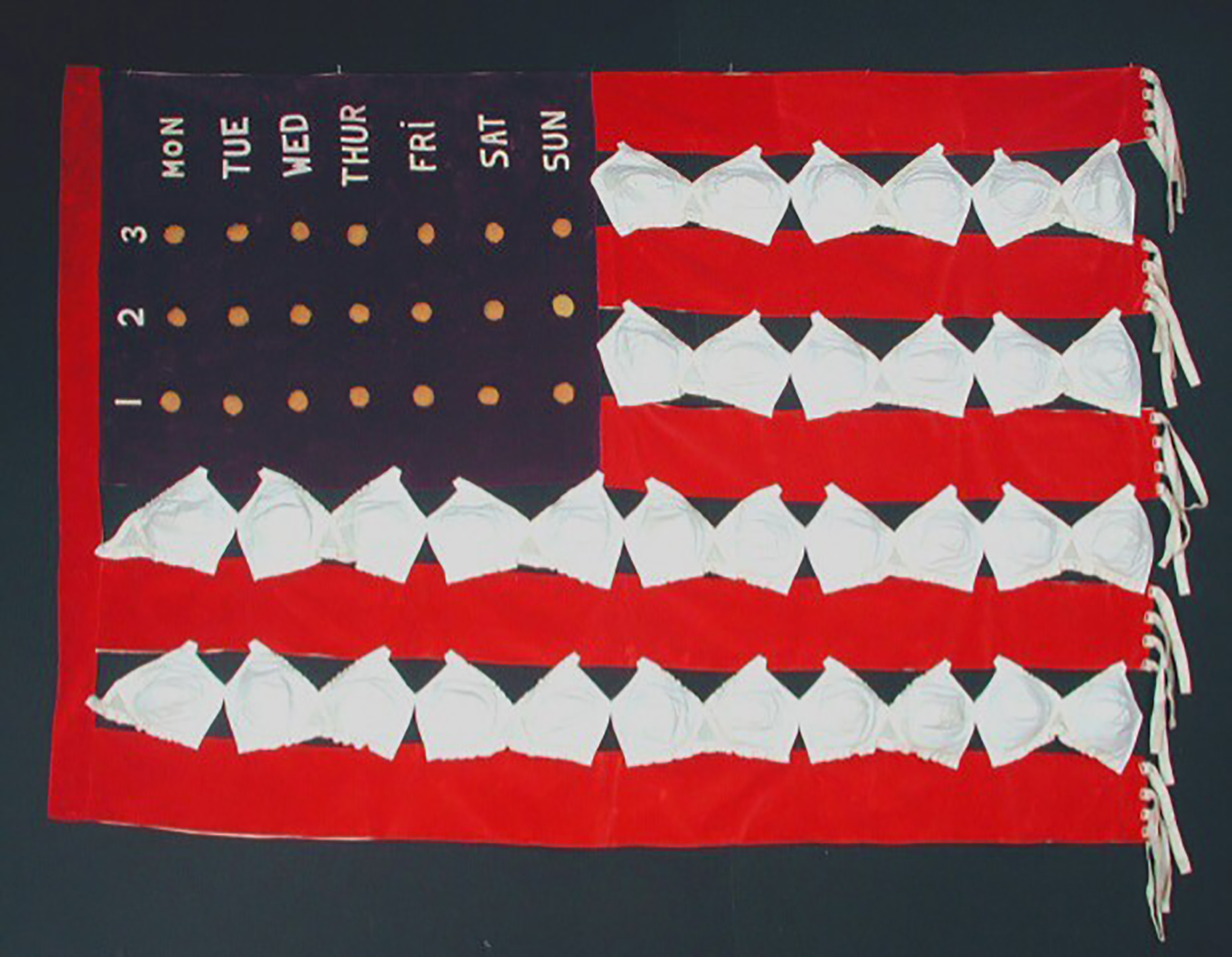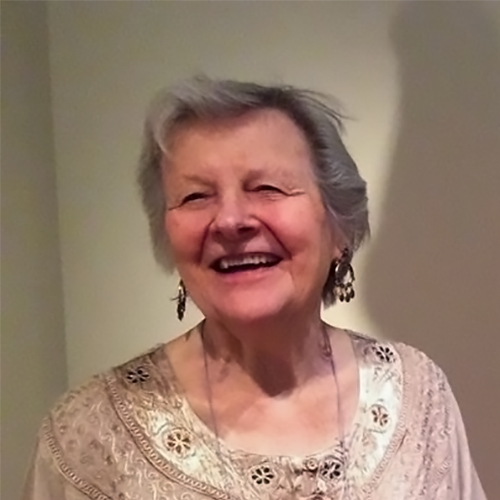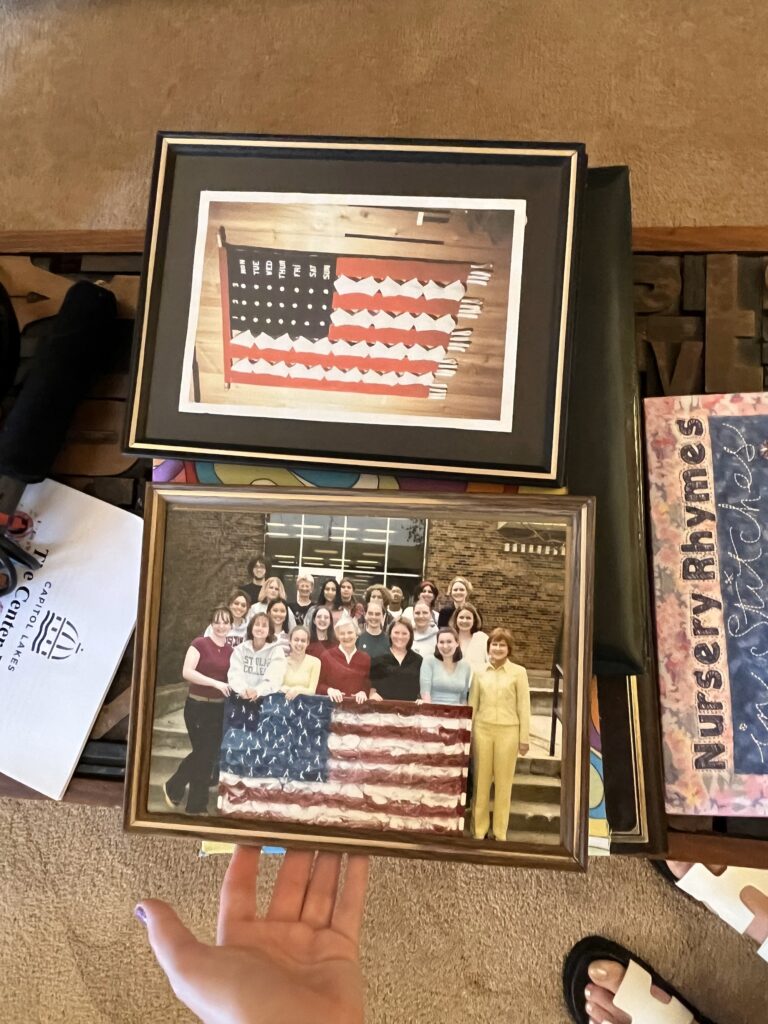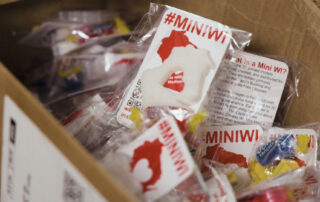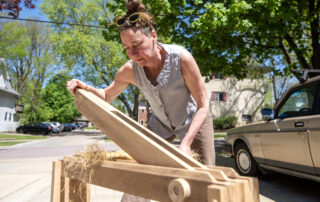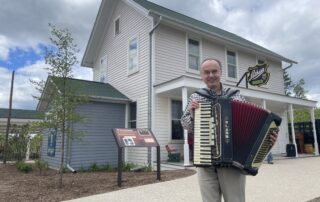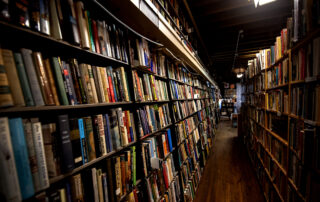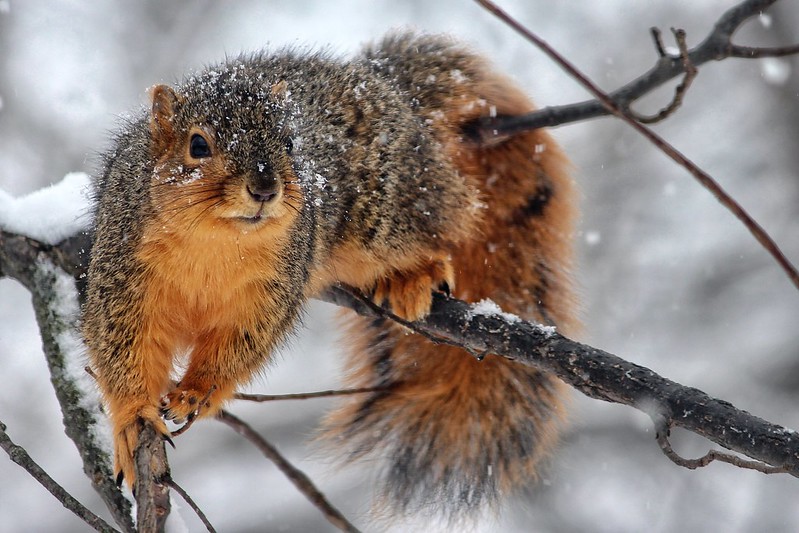The 1970s were the height of the second wave of feminism, where women were advocating for equal rights and opportunities to men in the US. In 1971, one woman expressed her feminist views through art made out of a unique medium: bras. Molly Hunken brings us the story of “The Land of the Freed-up Woman,” which is part of the Wisconsin 101 project. It tells the history of Wisconsin through objects.
==
Marge Engelman is a seasoned feminist who has spent much of her life in Wisconsin. When walking into her apartment, it’s basically impossible not to notice the countless art pieces covering her walls and cabinet spaces.
After gaining an undergraduate degree in sociology at Illinois Wesleyan University and a master’s in teaching from Northwestern University in her home state of Illinois, Engelman moved to Wisconsin with her husband, Ken, in 1953. However, despite the many pieces of artwork that currently adorn Engelman’s apartment, she wasn’t always an artist.
“When I was in grade school, a teacher had implied that I did not have artistic ability, so I took that seriously,” said Engelman. “Until I was, I think 38, I didn’t even go into art galleries. And I certainly didn’t do art of my own.”
It wasn’t until the University of Wisconsin- Extension offered a course in contemporary art that Engelman began studying and creating it.
“I found out there was a program in the School of Home Economics, and it was called Related Art. So I registered,” said Engelman. “I was about 40 years old, so I was a different kind of student.”
Through this program, Engelman got her master’s degree in art after two years. After teaching some introductory courses at UW-Green Bay and UW-Fox Valley, Engelman was appointed as the director of outreach at UW-Green Bay, where she focused on making courses available to incarcerated men, people living on First Nations tribal lands, and even downtown at the mall.
“People in Green Bay weren’t used to having a university,” she said. “So, to get them started off campus was one of our motives.”
According to Engelman, it was around this time that the feminist movement really began to take root.
After learning about the movement, Engelman said she became a “flaming feminist” due to the extreme discrimination she experienced while growing up and within the workforce. She said this was because women were not valued as much as men were.
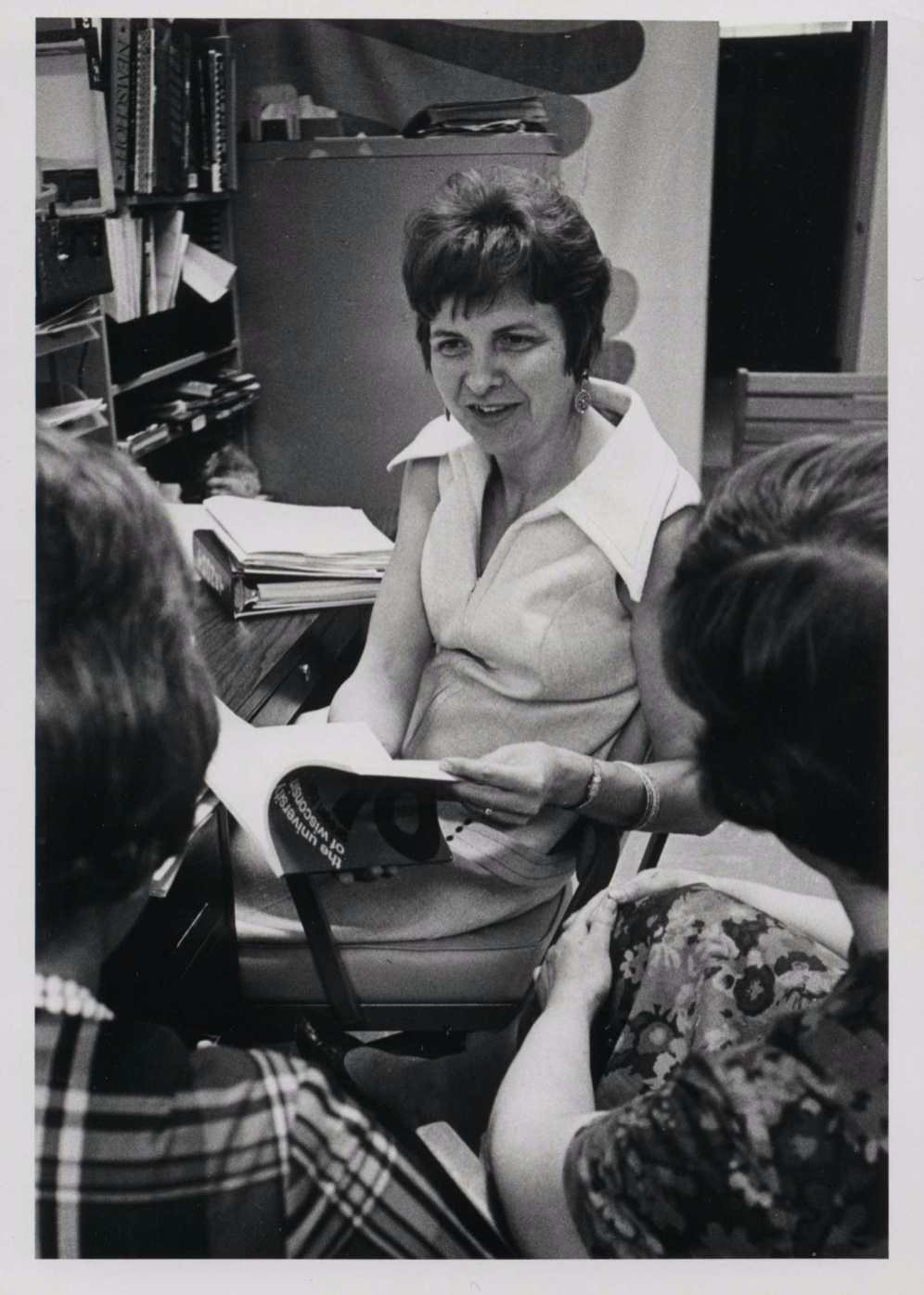
Marjorie Engelman talks with peers at the University of Wisconsin- Green Bay. (Courtesy of UW-Green Bay Archives)
She began to do lots of speaking in the community to promote feminism, and was able to start a childcare center on UW-Green Bay’s campus for students and faculty. In between this work, Engelman was still doing art. She said she got the inspiration for her “bra banner” from the idea of the bra-burning feminists of the 60s.
Engelman created the flag, which she entitled, “The Land of the Freed-up Woman,” in 1971 in response to her experiences with discrimination as a working woman. During her time working in administration at UW-Green Bay, Engelman said she was the only woman on staff.
“There were things that were said to me and opportunities I didn’t have because I was a woman,” said Engelman. “I thought people should start talking about that.”
After she released the flag, Engelman said it sparked lots of controversy due to its clear political message.
Modeled after the American flag, it features stripes made out of red velveteen and twenty white padded bras.
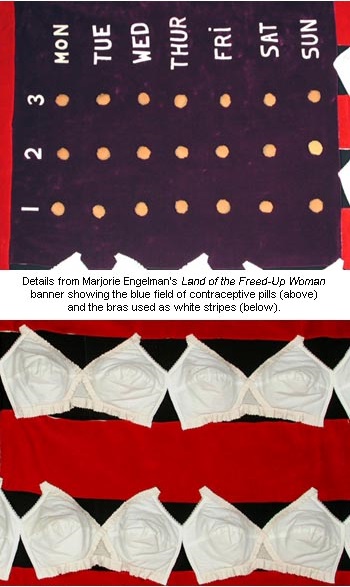
Details on “The Land of the Freed-up Woman.” (Courtesy of Wisconsin Historical Society)
The blue and white stars in the upper corner were altered as well, as Engelman replaced them with foam meant to imitate birth control pills, which had recently been approved by the FDA. Lastly, Engelman cut the straps from the bras and attached them to the banner’s edge to create a fringe.
Due to the unique nature of her art materials, Engleman still remembers her exchange with the saleswoman when she went to purchase them. She said she remembered going to a department store, Montgomery Wards, and telling a saleswoman she wanted 20 bras.
“She looked at me and said, ‘You really like that bra?’ And I said, ‘No, I’m doing an artistic thing.’ So she didn’t talk to me after that,” Engelman recounted.
After she created the flag, it was first displayed in 1972 at the Neville Public Museum in Green Bay. Engelman says its position at the top of the stairs under a spotlight led to lots of feedback, both positive and negative.
“A lot of people seemed to like it a lot because it was big and it was colorful and the bras would bring chuckles to people,” she said. “But then the negative reaction was that I was desecrating the flag … just the fact that I would feel free to use the symbol of the flag as the background offended some people.”
One especially positive reaction came in 2002, 31 years after Engelman’s original creation of the flag. In honor of Women’s History Month, a group of high school students at Memorial High School recreated Engelman’s bra flag out of 50 bras and chicken wire.
After donating “The Land of the Freed-up Woman” to the Wisconsin State Historical Society in 2000 for preservation in their archives on the feminist movement, Engelman says the high schooler’s tribute showed the public still had a continuing interest in her piece and its meaning.
At the age of 96, Engelman is still creating art out of her Madison home, even building a makeshift sewing center in her bathroom. Some of her pieces now are politically-motivated, and some relate to more tame themes like nursery rhymes.
- Marge Engelman shows a piece of her art in her Madison apartment in June 2023. (Molly Hunken/WPR)
- Photos of “The Land of the Freed-up Woman” and a photo of the flag’s recreation created by Madison Memorial Hiigh School students in 2002 are framed in Marge Engelman’s Madison apartment. (Molly Hunken/WPR)
